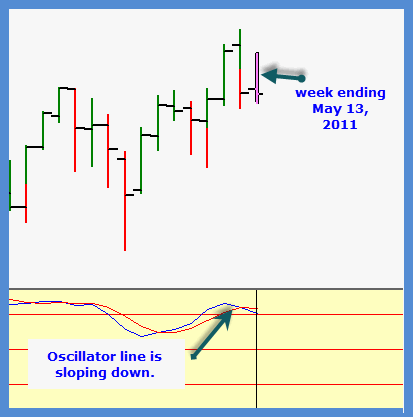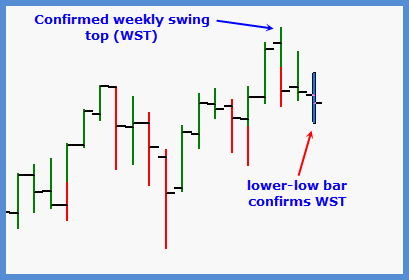During my 22-year trading career in Stocks, Futures and Commodities, I have come across many methods and techniques. Most at first glance appear intriguing, but soon it becomes evident that all those pretty lines do nothing more than decorate your screen and put a drain on your trading account.
Fortunately, when you have been at it as long as I have, you are bound to come across a few good ideas that actually translate into profits.
In this article, I am going to share with you one simple technique that I have found to be valuable for the purpose of deciding whether to be bullish or bearish (or neither) most freely traded markets. This simple method is not meant to be used alone, but in conjunction with a timing method for actual entry. In other words, you would use this method to first determine your trend bias (bullish, bearish, neutral), and then you would use whatever your short-term timing method happens to be for the final entry decision. I personally use the FDates timing method for making entry decisions.
Using a WEEKLY price chart, where each price bar represents a week of trading, you want to apply a simple MACD indicator. Along with the Oscillator and Signal lines that you normally get with MACD, having the Histogram on it is very helpful also. The standard setting of 28, 12, 9 will suffice.
The line we want to pay attention to is the Oscillator line, which is the line that is usually above the Signal line when they are both moving up, and is below the Signal line when they are both moving down. You want to note if the Oscillator line is moving down or moving up. If it is moving sideways, then no trend bias is generated.
Suppose that the line is moving up. This is the first indication that our trend bias may be bullish. To confirm this, we also want to note whether the last SWING on the weekly chart is a top or bottom. If it was a bottom, our trend bias is BULLISH and we then can move to the daily chart to look to trade Buy setups. But if the last SWING is a top, we remain neutral as our trend bias, looking for trades elsewhere.
A SWING, for those who may not know this term, refers to confirmed top or bottom. For a Swing Top, you have a price bar with a higher-high than the previous bar high, followed by a price bar that is not higher than this bar, but makes a lower-low. This lower-low can come as soon as the next price bar, or later. When it does, that higher-high bar is called a confirmed Swing Top. The reverse is true for Swing Bottoms, where you start with a lower-low bar, eventually followed by a higher-high bar.
Here is an example of having a bearish trend bias. You note on the MACD that the Oscillator line is moving downwards. This formed as soon as the week May 13, 2011 price bar in the SP500 had completed.

The example above shows the MACD applied to the weekly price chart. Notice that the Oscillator line is sloping down. This is our first indication that we may be entering a bearish trend bias.
Now we need only one more indication before we decide to be looking for sell setups on the daily chart. Notice that on the chart above that there has yet to be a confirmed swing top. So until that happens, we wait.
On the next chart, notice that a weekly swing top (WST) has confirmed due to the weekly top being followed by a lower-low price bar. At this point, we are officially bearish trend biased.

I have used this simple method for some time with very good results. Of course, it is important to have a good timing method for your actual Buy and Sell setups. Without that, this method would have limited value.
Rick Ratchford
Trader, Market Forecaster
FDates Market Timing Membership



